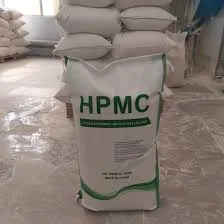
loka . 31, 2024 04:14 Back to list
hydroxyethyl cellulose manufacturing process
Hydroxyethyl Cellulose Manufacturing Process
Hydroxyethyl cellulose (HEC) is a widely used non-ionic water-soluble polymer derived from cellulose. It finds extensive applications in various industries, including pharmaceuticals, cosmetics, and construction, primarily due to its thickening, binding, and film-forming properties. The manufacturing process of HEC involves several key steps that transform cellulose into this valuable compound.
The first step in the HEC manufacturing process is the extraction of cellulose from natural sources, typically wood or cotton. This cellulose is then treated with an alkaline solution to remove impurities and enhance its reactivity. The purified cellulose is subsequently dried and ground into a fine powder, increasing its surface area for further chemical reactions.
The next crucial step is the etherification process, where the cellulose reacts with ethylene oxide in the presence of a catalyst. This reaction takes place under controlled temperature and pressure conditions to ensure a successful substitution of hydroxyl groups in the cellulose with hydroxyethyl groups. The degree of substitution, which is the ratio of hydroxyethyl groups to the cellulose hydroxyl groups, can be adjusted during this process to tailor the properties of the final product according to specific applications.
hydroxyethyl cellulose manufacturing process

After the etherification is complete, the reaction mixture undergoes neutralization to halt the reaction and remove any residual reagents. This is typically done by adding a neutralizing agent, followed by washing the product to separate unreacted materials and catalysts. The resulting product is then dried to obtain a powdery form of hydroxyethyl cellulose.
The final step involves quality control and characterization of the HEC product. Various tests are conducted to evaluate its viscosity, solubility, and performance under different conditions. These characteristics are crucial as they determine the suitability of HEC for various applications.
In conclusion, the manufacturing process of hydroxyethyl cellulose is a complex yet fascinating journey from natural cellulose to a versatile polymer. With its unique properties, HEC continues to play a vital role in numerous industries, demonstrating the importance of cellulose derivatives in modern applications. The ongoing development and optimization of HEC production methods will likely lead to enhanced performance and new applications in the future.
-
Versatile Hpmc Uses in Different Industries
NewsJun.19,2025
-
Redispersible Powder's Role in Enhancing Durability of Construction Products
NewsJun.19,2025
-
Hydroxyethyl Cellulose Applications Driving Green Industrial Processes
NewsJun.19,2025
-
Exploring Different Redispersible Polymer Powder
NewsJun.19,2025
-
Choosing the Right Mortar Bonding Agent
NewsJun.19,2025
-
Applications and Significance of China Hpmc in Modern Industries
NewsJun.19,2025







